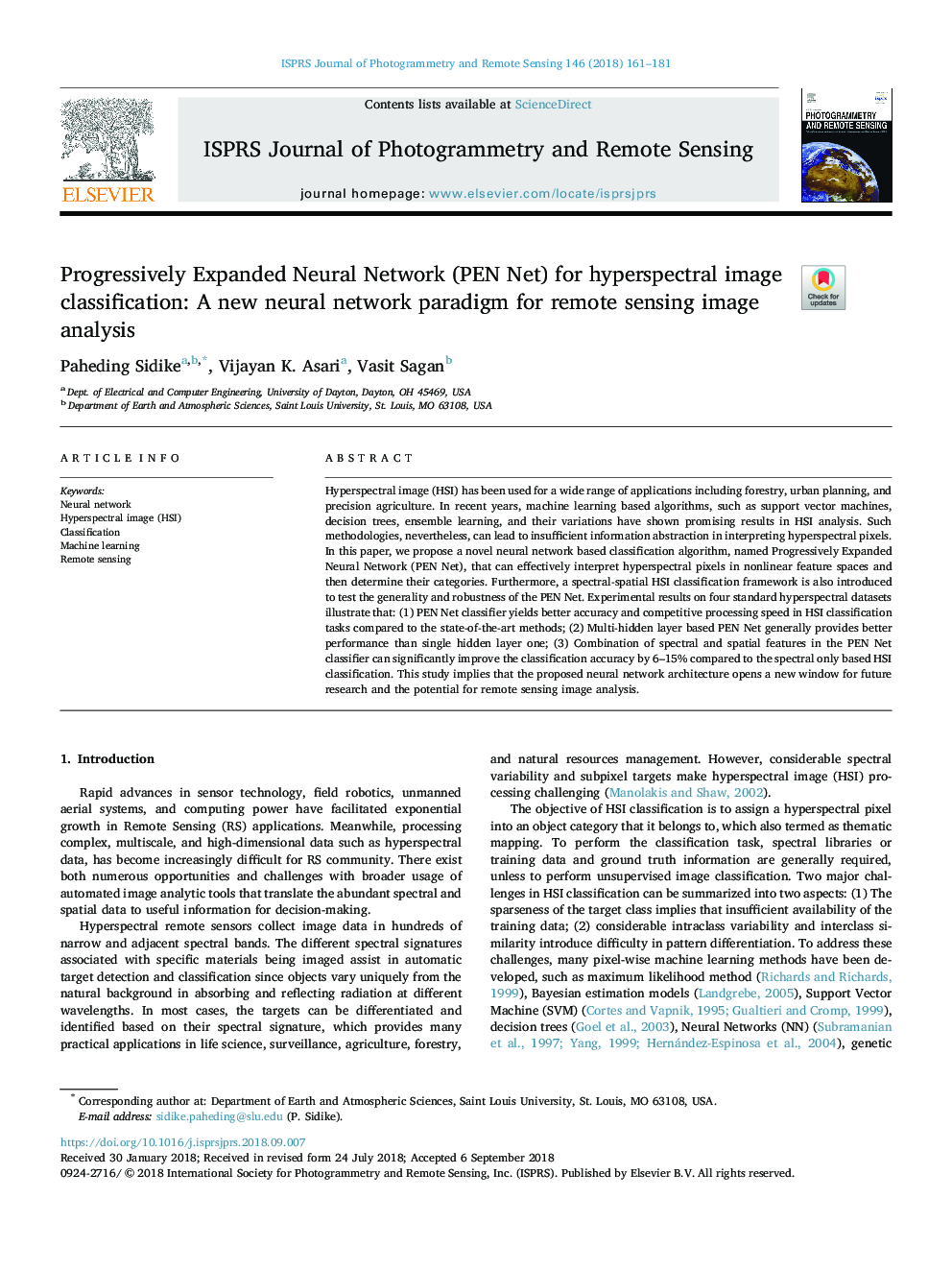| Article ID | Journal | Published Year | Pages | File Type |
|---|---|---|---|---|
| 10139672 | ISPRS Journal of Photogrammetry and Remote Sensing | 2018 | 21 Pages |
Abstract
Hyperspectral image (HSI) has been used for a wide range of applications including forestry, urban planning, and precision agriculture. In recent years, machine learning based algorithms, such as support vector machines, decision trees, ensemble learning, and their variations have shown promising results in HSI analysis. Such methodologies, nevertheless, can lead to insufficient information abstraction in interpreting hyperspectral pixels. In this paper, we propose a novel neural network based classification algorithm, named Progressively Expanded Neural Network (PEN Net), that can effectively interpret hyperspectral pixels in nonlinear feature spaces and then determine their categories. Furthermore, a spectral-spatial HSI classification framework is also introduced to test the generality and robustness of the PEN Net. Experimental results on four standard hyperspectral datasets illustrate that: (1) PEN Net classifier yields better accuracy and competitive processing speed in HSI classification tasks compared to the state-of-the-art methods; (2) Multi-hidden layer based PEN Net generally provides better performance than single hidden layer one; (3) Combination of spectral and spatial features in the PEN Net classifier can significantly improve the classification accuracy by 6-15% compared to the spectral only based HSI classification. This study implies that the proposed neural network architecture opens a new window for future research and the potential for remote sensing image analysis.
Related Topics
Physical Sciences and Engineering
Computer Science
Information Systems
Authors
Paheding Sidike, Vijayan K. Asari, Vasit Sagan,
